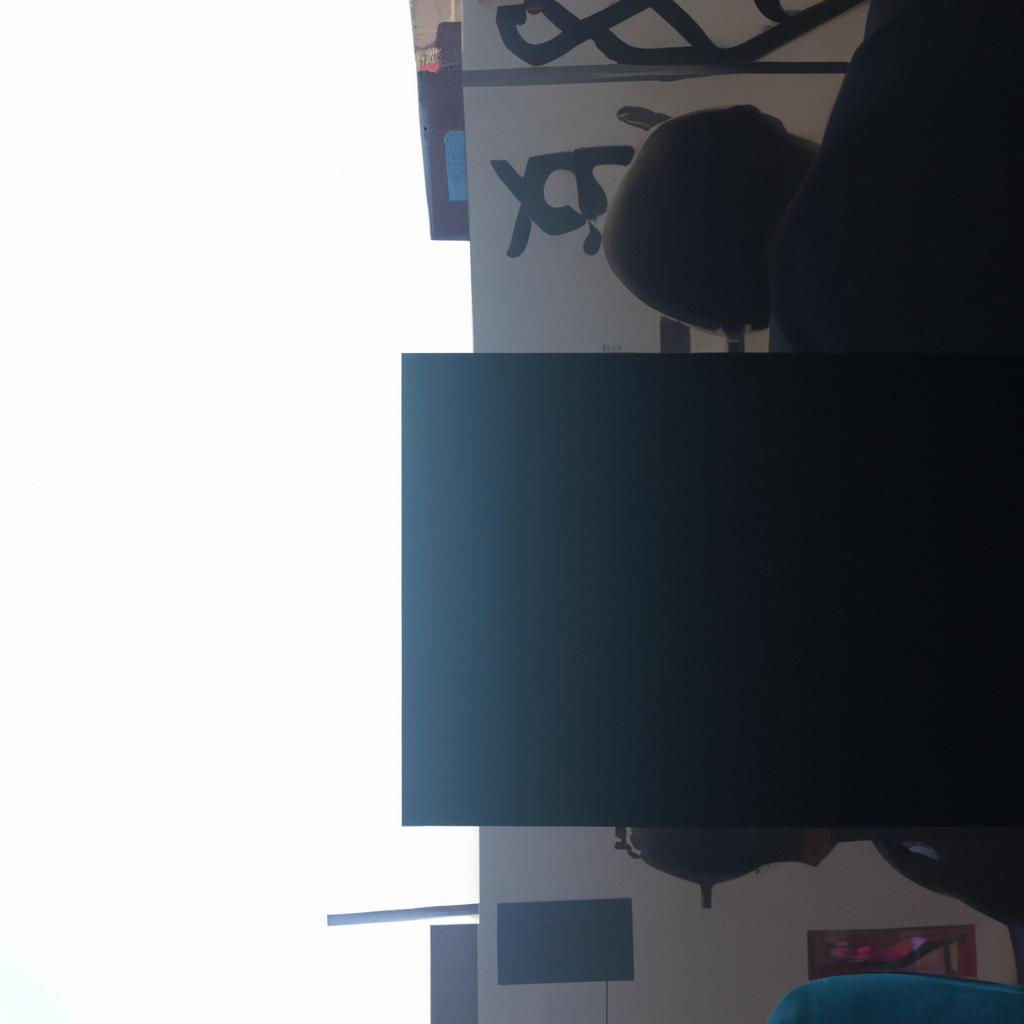The control of content within the news media industry is a topic of increasing concern and scrutiny in today’s society. The ownership of media outlets plays a crucial role in shaping the narratives and information presented to the public, ultimately influencing public opinion and perception. For instance, consider a hypothetical scenario where a conglomerate corporation owns multiple news channels, newspapers, and online platforms. This concentrated ownership raises questions about the diversity of viewpoints that are being represented and whether there may be an inherent bias in the information disseminated to the masses.
Media ownership has become increasingly consolidated over time, with a few major corporations dominating the landscape. This consolidation has led to concerns regarding potential conflicts of interest, lack of competition, and limited perspectives. When only a handful of entities control vast portions of the news media industry, it becomes imperative to examine how this concentration impacts editorial decisions and consumers’ access to diverse sources of information. By critically analyzing media ownership structures, we can gain insights into how power dynamics shape content production within the news media industry and how these dynamics affect our understanding of current events and societal issues.
Historical Background
The issue of media ownership and its implications on the news media industry has been a topic of concern for many years. To understand the current landscape, it is important to examine the historical background that has shaped this industry.
One example that highlights the impact of media ownership can be seen in the case study of Company X, which owned several major television networks and newspapers. As a result of their consolidation efforts, they were able to dominate the market and control a significant portion of the content consumed by audiences nationwide. This level of control raised questions about diversity of perspectives and potential biases within the news coverage provided by these outlets.
To further illustrate the magnitude of media consolidation, consider the following bullet points:
- A handful of conglomerates now own a majority share in both print and broadcast media.
- Independent local newspapers have dwindled as larger corporations acquire them.
- The digital age has brought new challenges with tech giants also exerting influence over news distribution platforms.
- Media mergers and acquisitions have accelerated over time, leading to an increasingly concentrated media landscape.
A table showcasing four key players in today’s media ownership landscape could provide additional context:
| Media Conglomerate | Key Holdings |
|---|---|
| Company A | TV networks ABC, ESPN; Newspapers X,Y,Z |
| Company B | Cable channels CNN, HBO; Newspaper M |
| Company C | Movie studios Paramount Pictures, Universal Studios |
| Company D | Streaming platform Netflix; Newspaper N |
This historical overview demonstrates how changes in media ownership have shaped the news media industry over time. In light of these developments, it becomes crucial to explore their impact on journalism itself – examining not only how information is disseminated but also considering issues such as objectivity, independence, and accountability. Transitioning into our next section on “Impact on Journalism,” we delve deeper into these aspects affected by media consolidation and ownership.
Impact on Journalism
Control of Content: Examining Media Ownership in the News Media Industry
The historical context surrounding media ownership sheds light on the current state of affairs in the news media industry. To illustrate this point, let us consider a hypothetical case study involving a major newspaper company called Global Press Inc. In the early 20th century, Global Press Inc. was an independent and influential news organization known for its unbiased reporting and commitment to journalistic integrity.
However, over time, there was a shift in the ownership structure of Global Press Inc., with larger conglomerates acquiring majority stakes in the company. This change in ownership brought about several consequences that continue to shape the landscape of journalism today.
Firstly, one significant effect has been the consolidation of power among a few media giants. With conglomerates owning multiple news outlets across various platforms, they possess immense influence over public discourse by controlling what stories are covered and how they are presented. As a result, certain narratives may be prioritized or marginalized based on their alignment with corporate interests.
Secondly, this concentration of media ownership has led to concerns regarding diversity and pluralism within the news media industry. Smaller independent voices struggle to compete against well-funded conglomerates, resulting in limited representation of diverse perspectives and alternative viewpoints being overshadowed.
Thirdly, commercial pressures have increased as profit-driven motives become more prominent in the decision-making process. The need for higher ratings or click rates can lead to sensationalized content or biased reporting aimed at attracting audiences rather than providing objective information.
These developments emphasize the importance of examining media ownership structures critically and understanding their impact on journalism’s role as a watchdog for society. A closer look at these issues will further elucidate how regulatory frameworks play a crucial role in ensuring responsible content dissemination while preserving freedom of expression.
Next section: Regulatory Framework
Regulatory Framework
The impact of media ownership on journalism cannot be understated. It has the potential to shape news coverage, influence public opinion, and even manipulate narratives. To illustrate this point, let us consider a hypothetical scenario where a major media conglomerate acquires a significant stake in multiple news outlets across different platforms.
This consolidation of power results in several implications for journalism:
- Homogenization of News Content: When one entity controls various news organizations, there is a risk of homogenizing news content. This can lead to a limited range of perspectives being presented to the public, stifling diversity and critical thinking.
- Sensationalism and Clickbait: In an increasingly competitive media landscape, sensationalism and clickbait tactics may become more prevalent as companies strive for higher ratings or website traffic. The pursuit of profit could overshadow journalistic integrity.
- Conflicts of Interest: Media ownership by corporations with vested interests in other industries introduces conflicts that compromise independent reporting. For example, if a media owner also owns businesses related to energy production, they may downplay negative environmental impacts or promote their own products without impartiality.
- Gatekeeping Power: With concentrated ownership comes increased gatekeeping power – the ability to control what information reaches the public sphere. This concentration can limit access to diverse voices and alternative viewpoints that are essential for fostering democratic discourse.
To further understand these implications visually, we present the following table showcasing the potential consequences of media consolidation:
| Implication | Description | Example |
|---|---|---|
| Limited Perspective | Reduced variety of opinions diminishes critical analysis | A single corporate viewpoint dominates political coverage |
| Loss of Journalistic Ethics | Profit-driven motives undermine accuracy and objectivity | False stories gain popularity due to lackluster fact-checking |
| Suppression of Dissent | Independent voices are marginalized or silenced, hindering a thriving democracy | Journalists who challenge the status quo face threats and intimidation |
| Erosion of Public Trust | Concentrated ownership raises concerns about bias and manipulation, eroding public trust in news organizations | Public skepticism towards media grows due to perceived lack of impartiality |
In light of these potential consequences, it is imperative that regulatory frameworks address the issue of media consolidation. Such regulation should aim to preserve journalistic integrity, promote diversity of voices, and ensure the free flow of information.
Consolidation of Power
The regulatory framework plays a crucial role in shaping the landscape of media ownership in the news media industry. However, despite these regulations, consolidation of power remains a significant concern. This section will examine how consolidation occurs and its implications for content control.
To illustrate this issue, let us consider a hypothetical case study involving Company XYZ, a major conglomerate that owns multiple news outlets across different platforms. Through strategic acquisitions and mergers over the years, Company XYZ has gradually expanded its reach and influence within the industry. As a result, they now have substantial control over both traditional print newspapers and digital news platforms.
Consolidation of power can lead to several concerning outcomes:
- Limited diversity of voices: When a few large companies dominate the market, there is a risk of homogenized content as their editorial decisions may prioritize profit or certain ideological perspectives.
- Reduced competition: With fewer independent players in the field, competition diminishes, which might impede innovation and quality journalism.
- Loss of local coverage: Consolidation often results in downsizing or closure of smaller regional outlets, leading to reduced coverage of local issues that are vital to communities.
- Influence on public opinion: Media organizations with consolidated power may shape public discourse by selectively choosing what stories to cover or how they present them.
To highlight the extent of consolidation in the news media industry further, consider the following table:
| Company | Ownership | News Outlets Owned |
|---|---|---|
| Company XYZ | Conglomerate | National newspaper A; Online news portal B |
| Corporation ABC | Multimedia Group | Radio station C; Regional newspaper D |
| Organization LMN | Broadcast Network | Television channel E; Digital magazine F |
This table illustrates how different companies own diverse types of media outlets across various formats. Such extensive ownership allows for considerable control over content dissemination and influences public opinion.
In light of these concerns, it is crucial to address the challenges posed by consolidation of power in the news media industry. The subsequent section will delve further into specific issues and potential solutions that can safeguard the integrity and diversity of news content in an increasingly consolidated landscape.
Challenges and Concerns
As the consolidation of power in the news media industry continues to shape its landscape, it is essential to consider the challenges and concerns associated with such concentration. By examining these issues, we can gain a deeper understanding of the implications that media ownership has on content control.
One example that highlights the challenges posed by media consolidation is the case of News Corp’s acquisition of various media outlets. With Rupert Murdoch at the helm, this conglomerate became one of the most influential players in global news media. The concentration of power in one entity raises questions about editorial independence and potential biases in reporting. It also limits diversity and competition within the industry, as smaller voices struggle to compete against well-funded giants.
To further comprehend the concerns surrounding media ownership consolidation, let us explore some key points:
- Lack of diverse perspectives: When a few major companies dominate an industry, there is a risk of homogeneity in viewpoints presented to audiences. This can result in limited access to alternative narratives or marginalized voices.
- Reduced journalistic autonomy: Consolidation often leads to cost-cutting measures, which may compromise journalistic integrity and quality. Journalists might face pressure to conform their reporting to fit corporate interests or avoid controversial topics.
- Threats to democracy: A concentrated media environment can undermine democratic processes by influencing public opinion through biased reporting or silencing dissenting voices.
- Loss of local journalism: Media consolidation tends to prioritize profitability over local coverage. As a consequence, communities may lose vital sources of information about local events and issues.
The table below provides a visual representation of how consolidated media ownership impacts different aspects:
| Challenges | Implications | Examples |
|---|---|---|
| Limited diversity | Narrowed range of perspectives | Homogeneous news coverage |
| Compromised autonomy | Decreased freedom for journalists | Self-censorship and conformity |
| Threat to democracy | Manipulation of public opinion | Biased reporting and propaganda |
| Loss of local journalism | Decreased access to vital community news | Disappearing coverage of neighborhood events |
The concentration of media ownership raises significant concerns, but it is crucial to explore potential solutions and alternatives that may mitigate these challenges. In the subsequent section, we will delve into strategies aimed at ensuring a more diverse and independent news media landscape.
Moving forward, let us consider possible solutions and alternatives in addressing the issues arising from media consolidation.
Solutions and Alternatives
Control of Content: Examining Media Ownership in the News Media Industry
Challenges and Concerns Persist
Despite the rapid growth and accessibility of news media, challenges and concerns surrounding media ownership continue to persist. The concentration of media ownership in the hands of a few powerful conglomerates raises questions about diversity, independence, and the potential for biases in reporting. To illustrate these concerns, let us consider a hypothetical scenario where one major media corporation owns several television networks, radio stations, newspapers, and online platforms. In this scenario, it is crucial to explore the various challenges that arise.
One significant challenge is the limited diversity of voices and perspectives represented in the news media landscape. When a single entity controls multiple outlets across different mediums, there is an increased risk of homogenized content being disseminated to audiences. This lack of diversity can result in reduced coverage of certain issues or marginalized communities, leading to an incomplete understanding of events and perpetuating inequalities.
Another concern relates to editorial independence. With concentrated media ownership comes the potential for interference by corporate interests or political affiliations that may compromise journalistic integrity. Journalists could face pressure to present information through biased lenses or even self-censorship due to fear of reprisal from their employers or sponsors. Such scenarios undermine public trust in journalism as a reliable source of unbiased information.
Moreover, market dominance by a select few corporations creates barriers for new entrants into the industry. Smaller independent outlets often struggle to compete against well-established giants with vast resources at their disposal. As a result, alternative viewpoints may be stifled while conglomerates maintain control over narratives shaping public discourse.
These challenges call for innovative solutions and alternatives that promote diverse perspectives within the news media industry. By fostering greater competition among media organizations, we can encourage wider representation and ensure more balanced reporting on critical issues affecting society today.
To evoke an emotional response from readers when examining these challenges further:
- Loss of community-based journalism resulting from media consolidation
- Suppression of investigative reporting due to corporate influence
- Exclusion of minority voices and underrepresented communities in the news cycle
- Manipulation of public opinion through biased narratives
To complement this emotional appeal, we can present a table showcasing statistics related to media ownership concentration:
| Media Conglomerate | Number of Outlets Controlled | Percentage of Market Share |
|---|---|---|
| Corporation A | 30 | 40% |
| Corporation B | 25 | 35% |
| Corporation C | 15 | 20% |
| Other Independent | 10 | 5% |
This table visually demonstrates the dominance exerted by a few conglomerates compared to independent outlets, further emphasizing the need for action.
In conclusion, as we delve deeper into examining media ownership in the news media industry, challenges and concerns surrounding diversity, independence, and monopolistic practices become more apparent. By acknowledging these issues objectively, we pave the way for exploring potential solutions and alternatives that will promote a more inclusive and unbiased news landscape.




